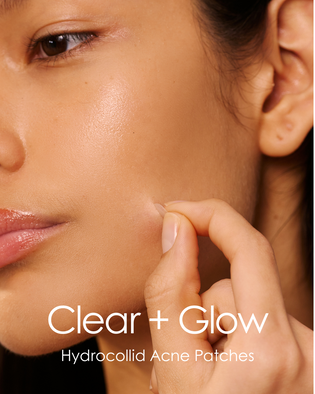
Does Microcurrent Actually Work?
IN THIS ARTICLE:
- 01 What is a Microcurrent Facial?
- 02 What are the Benefits of Microcurrent for Skin?
- 03 How does Microcurrent Work? The Science
- 04 Are Microcurrent Devices Safe?
- 05 Can You Use Microcurrent with Anti-Wrinkle Injections and Filler?
- 06 Does Microcurrent Hurt?
- 07 What Is the Difference Between an At-Home Microcurrent Device and an In-Salon Treatment?
- 08 How to Use an At-Home Microcurrent Device?
- 09 The Takeaway: Are Microcurrent Devices Worth it?
5-minute read
Dubbed the ‘non-invasive facelift’ microcurrent facial devices are fast emerging into the beauty tech landscape - but what are these medical-looking devices and can they really help reverse visible signs of aging? Let’s find out.
What is a Microcurrent Facial?
A microcurrent facial operates by running a gentle electric current through different probes. The electrical currents support muscle re-education by lifting and toning the facial muscles. The impulses also work on the skin cells to boost the production of ATP for cell rejuvenation. ATP (adenosine triphosphate), responsible for providing energy to skin cells, supports the production of collagen, elastin, and hyaluronic acid. Think of it like a facial workout - imagine a workout routine that consistently tones the body – the same principle applies to facial muscles when they are repeatedly engaged. Microcurrent facials are typically delivered in a clinic-like setting by an aesthetician. But the rise of at-home microcurrent devices means we can incorporate this beauty tech into our daily skincare routines.
What are the Benefits of Microcurrent for Skin?
- Reduce fine lines and wrinkles
- Boost collagen - increased skin elasticity
- Tightens and tones facial muscles for a more lifted appearance
- Boosts circulation for an increase in cell oxygenation and nourishment
- Aids lymphatic drainage
- Tones jaw, and neck area for a more contoured appearance
- Non-invasive rejuvenation
How does Microcurrent Work? The Science
Microcurrent is a type of electrical current that disrupts the cell membrane to allow positively charged ions to enter the skin cell. It is a low-frequency, low-intensity pulsed direct current. The positively charged ions trigger a range of intercellular reactions including increased ATP. The electrical currents also cause mild stress or damage to the cells and this triggers the skin’s natural repair process to regenerate cells and tissues.
Microcurrent is unique in that it affects all skin cell types plus muscles for advanced results.
It impacts:
- Fibroblasts to boost the production of collagen, elastin, and hyaluronic acid
- Sebocytes to regulate oil production
- Keratinocytes and melanocytes to repair the outer skin layer for a brighter and more vibrant complexion
- Muscles to tighten lift and support lymphatic circulation
Are Microcurrent Devices Safe?
Microcurrent is a very safe and effective treatment method and has been cleared by the FDA for use in skin treatments to reduce fine lines and promote a brighter complexion. While it is considered safe for most people, some exclusions apply. Including if you have a pacemaker or metal implants, are pregnant or breastfeeding, or have severe acne or other exposed skin conditions such as active eczema.
Can You Use Microcurrent with Anti-Wrinkle Injections and Filler?
Yes, you can, but it is advised to wait at least two weeks after your injectable treatment before using a microcurrent device. Always consult your aesthetician before combining the treatments. It is also advised to stop applying topical retinol for about 5 days prior to treatment.
Does Microcurrent Hurt?
Microcurrent treatments are generally not painful and are often described as a mild tingling sensation on the skin. The low-level electrical currents used in microcurrent devices are typically well-tolerated by most individuals. If you experience discomfort during the treatment, you can adjust the intensity settings to a more comfortable level. In-salon treatments may produce mild twitching, but it should never be painful or intolerable.
What Is the Difference Between an At-Home Microcurrent Device and an In-Salon Treatment?
A microcurrent facial delivered in a clinic environment will typically use a higher level of electrical current than that approved for home use. The muscle contraction will be more intense (but not painful) and results may last a little longer than immediately seen from an at-home device. For more severe cases of sagging and wrinkles, an in-salon treatment may be added along with the use of an at-home device.
An at-home device allows for repeated treatments at a once-off cost and is great for both preventative and therapeutic anti-aging. Microcurrent offers instant results, even with an at-home device - and the face looks more lifted and firmer even after just one treatment. For sustained results, and to allow the skin time to boost the production of collagen and other key firming proteins, repeat sessions are required. This is why most people now opt for an at-home device as frequent salon treatments may be costly and impractical. Depending on where you are on your skin journey, you may incorporate salon microcurrent facials with top-up at-home treatments using a microcurrent device.
How to Use an At-Home Microcurrent Device?
- Cleanse your face
- Apply a conductor gel
- Roll the probes over the face and neck in an upward and outward motion for 10-15 minutes in total
- Apply the rest of your AM or PM skincare routine
*Always follow personalized instructions for your specific device.
Vora | Mild Microcurrent Facial Roller
Firm facial muscles with our advanced microcurrent facial roller for radiant, youth-enhancing skin results
The Takeaway: Are Microcurrent Devices Worth It?
Microcurrent devices seem to hit the mark as both firming, lifting, and toning the facial muscles while simultaneously supporting the production of new collagen, and other key skin building blocks. This duality of purpose makes it a very appealing choice for anti-aging and skin health. For very severe sagging and harsh static wrinkles, you may want to break up your at-home treatments with a microcurrent facial in a clinic as the amount of electrical current used will be increased. For both at-home and in-clinic treatments, consistency of treatment is key to sustained results, so bear this in mind when deciding whether to invest in an at-home device.

written by Olivia Khader

















Leave a comment
This site is protected by hCaptcha and the hCaptcha Privacy Policy and Terms of Service apply.